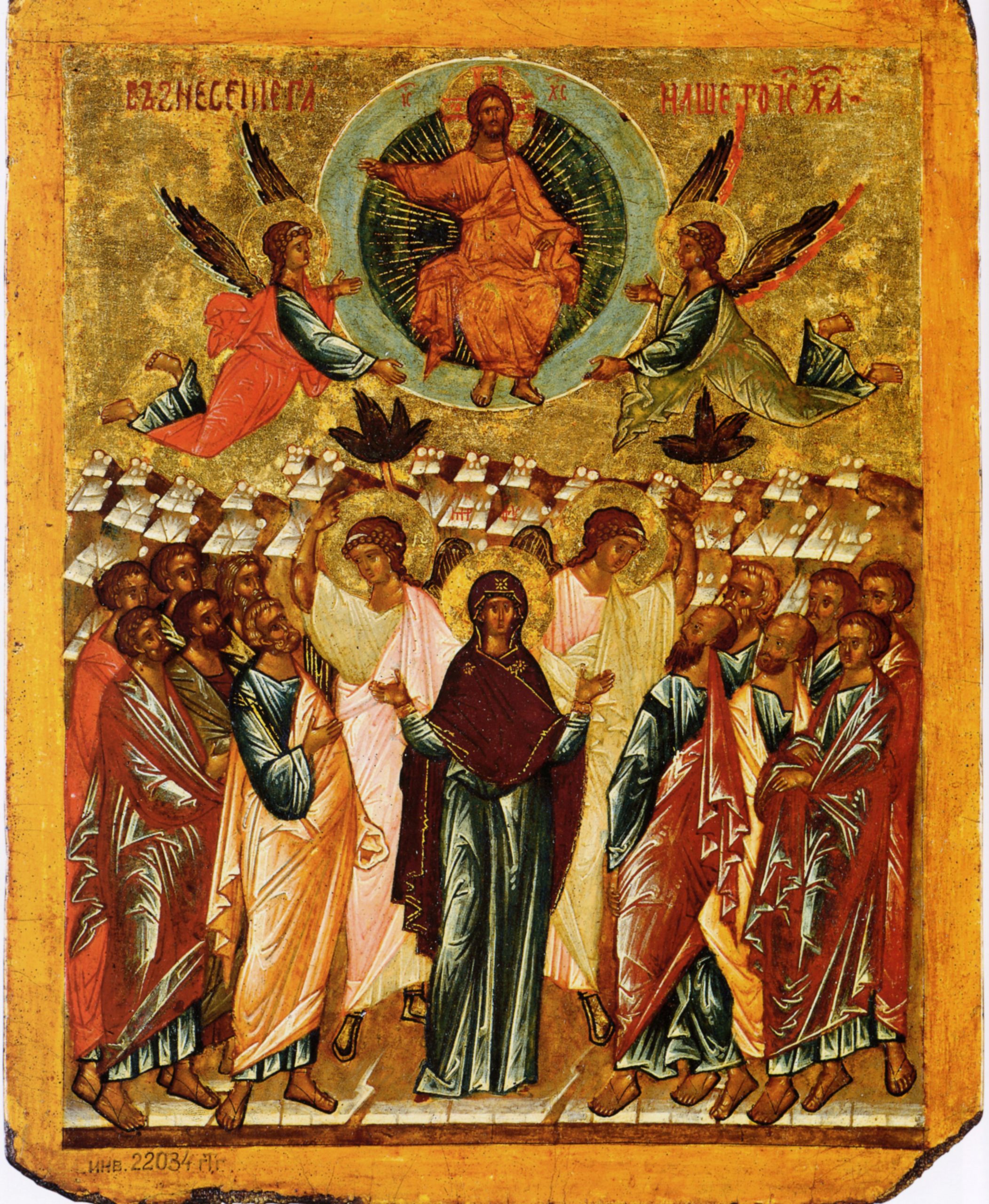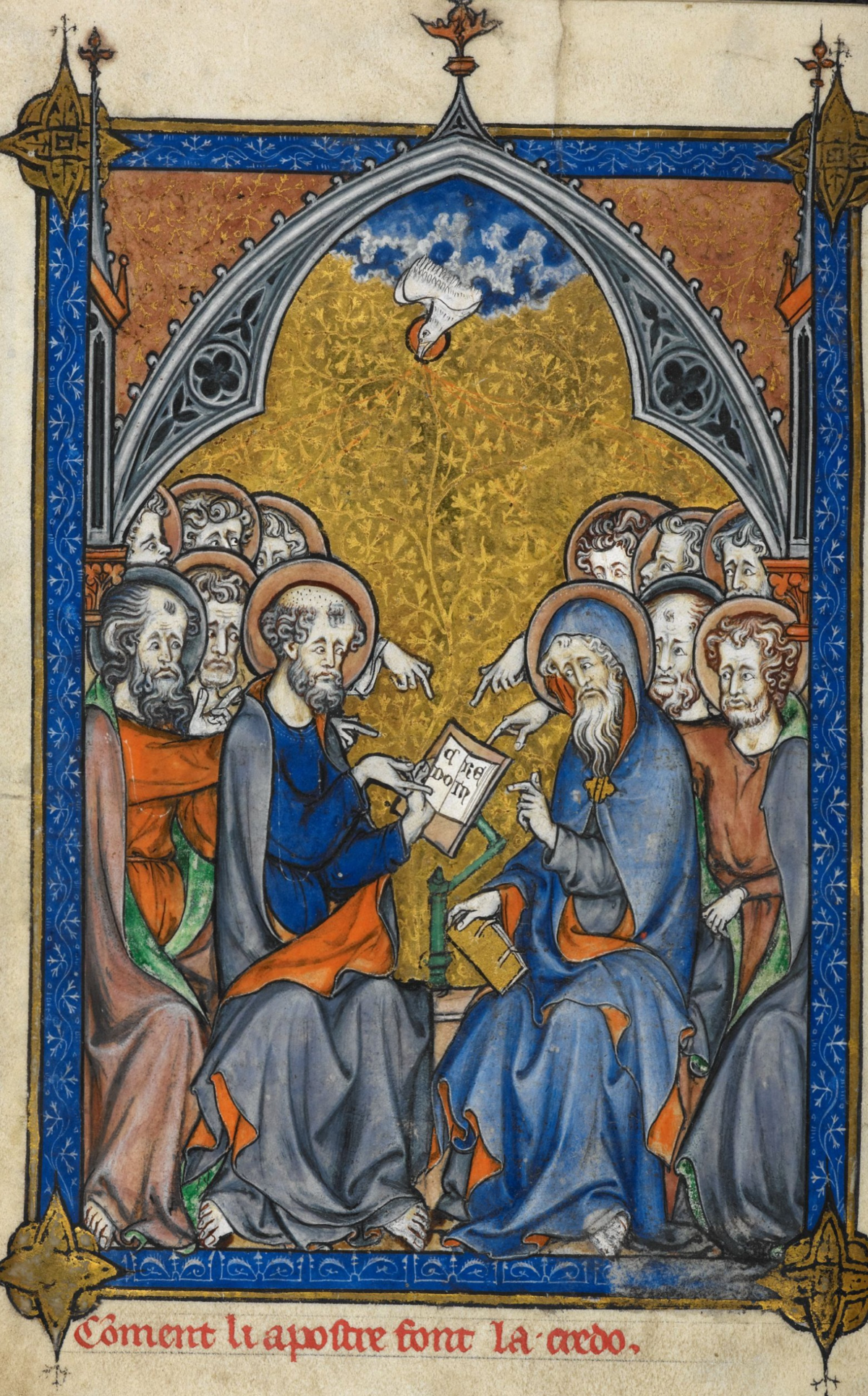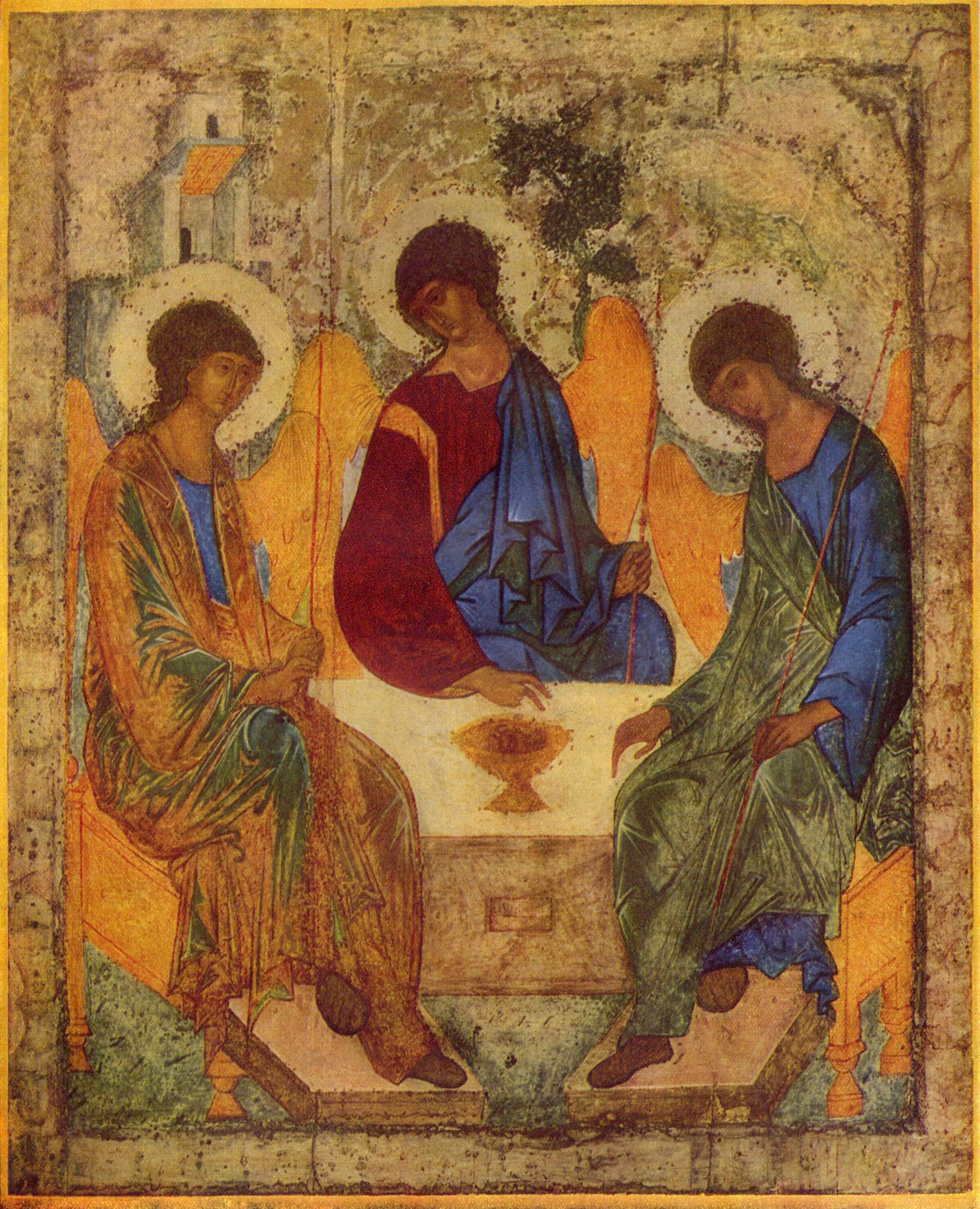If the earthly life of Jesus Christ ended with death on the Cross, it would be the greatest triumph of the forces of evil in history
Augustine Sokolovski, Doctor of Theology, Priest
On the fortieth day after Easter, the Church celebrates the Ascension of the Lord. Depending on the date of Easter, Ascension may be early or late. It is important to remember that it is always celebrated on Thursday of the sixth week after Easter. This year the Orthodox Church celebrates Ascension on May 25th.
Belief in the bodily ascension of the Lord Jesus is one of the most important dogmatic truths of Christianity. It is based on the direct evidence of the New Testament texts. The dogma of the Ascension is one of the indisputable foundations of the Christian faith.
The Nicene-Constantinopolitan Creed, which is universally used in the Orthodox Church and recognized by all Christian denominations, says that the Lord Jesus “rose from the dead on the third day, according to the Scriptures, and ascended into Heaven and sits at the right hand of the Father.” The Creed of the Holy Apostles, which is more commonly used in Western Christianity, says the same thing.
Before the transsubstantiation of bread and wine, into the Body and Blood of Christ in the Eucharistic prayer of John Chrysostom, the priest “remembers the saving commandment and everything that has happened for us, the cross, the tomb, the resurrection on the third day, the ascent to heaven, the sitting at the right hand, the second and glorious coming again.” The liturgy of Basil the Great “remembers His saving sufferings, the life-giving cross, the three-day burial, the resurrection from the dead, the ascension to heaven, sitting at the right hand of God and the Father.”
Obviously, the Ascension Dogma is no less important than the truths about the Incarnation, Resurrection and Second Coming of the Lord Jesus. It is important to remember and confess it with heart and mouth. According to the words of the Apostle Paul, “with the heart they believe unto righteousness, but with the mouth they confess unto salvation” (Rom. 10:10).
The Ascension was a historic event. It is spoken of in Holy Scripture. Thus, the descriptive narrative of the Ascension is contained in the third Gospel and in the Book of the Apostolic Acts. The Tradition of the Church and biblical science consider the Evangelist Luke to be the author of both New Testament texts. Both testimonies complement each other, revealing the unique mysterious essence of the Ascension of Jesus.
According to the Gospel of Luke, the Resurrected Jesus appeared to two disciples on the road to Emmaus. At first, they did not recognize Him. Jesus “was recognized by them in the breaking of bread” (Luke 24:35). Returning to Jerusalem, these disciples “found together the eleven Apostles and those who were with them” (33). “While they were talking about this, Jesus Himself stood in the midst of them” (36). The Lord assured the disciples of His Resurrection. Then He led them out of the city to Bethany, and lifting up His hands, blessed them. And when he blessed them, he began “to depart from them and … ascend into heaven” (Luke 24; 51-52).
The Holy Fathers, that is, the most prominent representatives of the theological and philosophical thought of the Church, who lived before the rise of Islam, represent a certain norm in the interpretation of Holy Scripture. They are the standard for the interpretation of the biblical word.
At the same time, in relation to the Church Fathers themselves, Scripture is a normative norm. In Latin, one of the classic languages of theology, this phrase sounds like “normа normans.”
At the center of Christian teaching is the belief that God in Christ Jesus became man. God went down in history when, more than two thousand years ago, Jesus was born in Palestine from the Virgin Mary. The Gospel of John calls Christ the Word, the divine Logos. At the same time, Scripture is also the word of God. In the Christian understanding, it represents a kind of incarnation before the Incarnation, the incarnation of God in the human word before the incarnation of the Word of God in human flesh and blood.
In turn, theology, being a science, constantly moves forward. Let us note that if theology were not a science and, as such, did not obey scientific laws, then all theological schools and faculties, apparently, would have to be locked. The study of Holy Scripture in modern times has moved far ahead. It is important to understand that the key difference between Christianity and other religions that also profess one biblical God is that, scientifically and in an intellectual, rational and existential sense, it is precisely a dogma, and not a collection of legal regulations or law.

Scholars, experts in the study of sacred texts, differently understand the meaning of the narratives of the Holy Scriptures about the Ascension. So, among them there is a well-founded opinion that the Evangelist Luke himself, and the community of Christ’s disciples, which also stood at the origins of the Gospel, simply combined the events of the Resurrection and Ascension in the text. That is, the Apostolic Church consciously sought to ensure that the Resurrection and Ascension appeared to subsequent readers of this gospel text as one and the same, united, identical, a single event. Recall that this point of view refers to the Ascension in the form as it is described in the Gospel of Luke.
According to the Acts of the Apostles, “The Lord showed Himself alive after His suffering with many sure proofs, appearing to them for forty days and speaking of the Kingdom of God” (Acts 1:3). On the fortieth day, “He gathered them” (4), commanded them not to leave Jerusalem and wait for the “Baptism with the Holy Spirit” (5). “Having said this, He ascended before their eyes, and a cloud took Him out of their sight” (9).
So, according to the Acts, the Ascension did not take place simultaneously, or immediately after the Resurrection, as it apparently follows from the Gospel, but after forty days. At the same time, in the language of Scripture, the number forty simultaneously denotes the necessary fullness of time. In other words, Christ, after His Resurrection from the dead, appeared to the disciples and talked with them about the Kingdom of God for as long as it was necessary for them.
So, according to the Acts, the Ascension did not take place simultaneously, or immediately after the Resurrection, as it apparently follows from the Gospel, but after forty days. At the same time, in the language of Scripture, the number forty simultaneously denotes the necessary fullness of time. In other words, Christ, after His Resurrection from the dead, appeared to the disciples and talked with them about the Kingdom of God for as long as it was necessary for them. At the same time, as Moses, at the command of God, led the people into the desert for forty years in order to prepare them for the Promised Land (Deut. 29:5), the Resurrected Jesus appeared to the disciples for forty days and prepared them for the Kingdom of Heaven. Those who saw the Risen One were themselves called to become Partakers of the Resurrection.
The key to the story of the Ascension in the book of the Apostolic Acts is not only the fact that the Lord ascended to Heaven on the fortieth day, but also the words about His upcoming Coming. “This Jesus, who was taken up from you into heaven, will come in the same way as you saw him go into heaven” (Acts 11:12). It turns out that the Community, which stood at the origins of the Book of Acts, united the Ascension and the Coming – not the Return, but the Coming – into a single event. For Luke in the Book of Acts, it was important that the subsequent Church not only did not separate the Parousia, that is, the Second Coming of Christ, from His Ascension, but also understood the Second Coming of Jesus as one of the components of His Ascension.
“And when they were looking at the sky, at the time of His ascension, suddenly two men in white clothes appeared to them. And they said: Jesus <…> will come in the same way” (Acts 1:10-11). Perhaps, for the Apostolic Community, and later for the Church of Christ, there were no more important words than the promise and assurance given by “two men in white clothes”.

It is important to understand that, like the Resurrection, the Ascension of the Lord Jesus to Heaven, was an absolutely spontaneous, unexpected event for the apostolic circle, not amenable to any preliminary calculation. Perhaps it is because of this that the Gospel of Luke combined these two narratives into a single whole.
Scripture is inspired by God” for it contains historical truth and, at the same time, divine words (2 Tim. 3:16). It is written by the Word of God and the Holy Spirit. They, according to the words of St. Irenaeus of Lyons, are the “hands of God” (130-200). It turns out that the Ascension Event, in the form in which the Scripture itself conveys it, has a special diachrony, its chronology is broken by God Himself.
After all, the Ascension is not just a point, a period in time and space, but a life-giving Truth that determines the full value of the existence of the Church as the Body of the Lord and the sacramental authenticity of the existence of the human Universe as a divine-human communion.
The Ascension is the final and irrevocable proof that the Resurrection of Jesus is not a return to the lists of those living on earth who was previously dead, as was the case with Lazarus and other people resurrected by the Lord, but a genuine overcoming of non-existence and death. In turn, the Resurrection and Ascension together are “the final interpenetration of the nature of man and the nature of God”, where, in the words of one of our contemporary theologians, “the boundaries of the biological are broken, and a new space of existence is created.”
That is why the Church sees in the Ascension of the Lord Jesus the foundation of her own being “not of this world” (John 18:36) and belonging already here and now to the Kingdom of Heaven. That is why the Church has always resisted attempts to bring the future age down to earth, to create here and now a new chiliastic utopia. Symbols and nuances are of great importance here.
According to Tradition, the earthly life of the Lord Jesus lasted 33 years. He continued preaching and ministry for three years. The Lord was killed, He died on the cross. If the life of Jesus ended with death on the Cross, it would be the greatest triumph of the forces of evil in history. But “God raised up His Son,” says the Book of Acts (Acts 13:26). At the same time, it is extremely important to remember and understand that the Resurrection is not a return. The Resurrected Jesus Himself spoke about this to Mary Magdalene with the words: “Do not touch Me!” (John 20:17). The resurrected Jesus is alive, but He is alive in a completely new, different transfigured being and qualities.
Therefore, the Church has always resisted attempts to “localize” Christ again, as, according to the Gospel, false Christs and false prophets will try to do. “Then if anyone says to you: ‘Behold, here is Christ’, or ‘there’, don’t believe it…”, said the Lord Jesus Himself (cf. Matt. 24:23). In this context, the words of the Apocalypse that the number of the Antichrist will be “666” receive an important interpretation. The fact is that, taken by itself, it represents the years of the earthly life of Christ (33) and the one who has understanding must calculate the number of the beast for this is the number of a man; his number is six hundred sixty-six,” says the Apocalypse (Rev. 13:18).
In this context the Antichrist is a false utopia of repeated messianism, an attempt to bring Christ back to earth by force, turning the Resurrection into a Return, denying the Ascension of Jesus. Turning to Jesus, St. Augustine says in his sermon on the Ascension: “You, caught, bound, beaten, and nailed to the Tree, You are dead, and You are buried, Jesus, ascend above Heaven!” (262).
In the 5th-6th centuries the Church in the East was shaken by Christological controversies. As a result, exactly one thousand years before the division of Western Christianity into Catholicism and Protestantism, the Eastern Church was divided into two equal and opposing parts with centers in Alexandria and Constantinople. The latter retained the name “Orthodox” for itself, and Alexandria began to be called “Coptic”. Communion between them was never restored. The debate was about the humanity of Jesus Christ, in fact, it directly affected the very essence of His Ascension.
At the same time, Bishop, and theologian Julian of Halicarnassus (+518) proposed a compromise solution. According to Julian, the Lord Jesus was a true God and a true Man. However, after the Ascension, Christ’s humanity was abolished, being completely permeated with the deity. In opposition to Julian, the warring halves of Eastern Christendom, as if for a moment, were able to unite in this element of theology. They defended the truth that the fullness of Christ’s humanity is preserved after the Ascension. This means that due to the Ascension of the Lord Jesus, God has … a human heart beating.
On the fiftieth day after Easter, the Church celebrates the Descent of the Holy Spirit on the Apostles. In accordance with the date of celebration, this day is called Pentecost. Depending on the date of Easter, Pentecost can be early or late. It is important to remember that it is always celebrated on the eighth Sunday after the Easter celebration. This year, Pentecost in the Orthodox Church is celebrated on June 4th.
In the context of our reasoning, Pentecost is the culmination of Easter, and, at the same time, the completion and revelation of the Ascension Itself. If the earthly life of Jesus Christ ended with death on the Cross, it would be the greatest triumph of the forces of evil in history. If the Lord Jesus, after His Resurrection from the dead, would forever remain with the disciples, he would not be available to the entire Universe. But God raised His Son. The Lord Jesus ascended into Heaven and sent down the Holy Spirit on the Apostles.
So, in the Resurrection, Ascension, and Pentecost – the Church and Christianity were born, the Universe gradually began to change, the World began to breathe differently. “I shall descend and on the third day rise, // And as the river rafts float into sight, // Towards My Judgement like a string of barges // The centuries will float out of the night,” as poetically wrote about this Boris Pasternak in his poem.

A characteristic feature of Western Christianity is the presence in the liturgical calendar of the so-called “ideological holidays”. Unlike more ancient celebrations in honor of Jesus and Mary, tied to specific events of Sacred History and the Economy of Salvation, ideological holidays express this or that dogmatic truth, refer to certain aspects of the Christian faith and piety, and can also refer to certain names, and the titles of the Lord Jesus or the Mother of God. A characteristic example of such an ideological name, this time not for a holiday, but for a temple, is the Church of Hagia Sophia in Constantinople.
Among such holidays in the Catholic Church: the Body of Christ, the Heart of Jesus, the celebration in honor of Christ the King, the Name of the Lord, the Name of the Mother of God, and others. Ideological holidays not only reflected one or another dogmatic belief, but also represented a well-defined reflection, or reaction to specific religious events or phenomena of a particular time.
Summarizing, we can say that the Orthodox Tradition, celebrated holidays of the Easter and Christmas cycles. With only one exception, which is characteristic of the Russian tradition. The fact is that Pentecost in our Church, and in those Orthodox Churches that in one way or another originate from the Russian Church, is called the Day of the Holy Trinity.
Recall that in the Western Christianity there is also Trinity Day, but it is celebrated a week after Pentecost. Church guides and translators often make mistakes in this place!
There is no clear explanation for this paradoxical and surprising phenomenon. Thus, representatives of the Paris School of Russian Orthodox Theology in the 20th century believed that Pentecost “became” the Trinity under the influence of the tradition of the monastery of St. Sergius of Radonezh (1314-1392).
The fact is that Sergius dedicated his monastery to the Trinity, created the famous church, and celebrated the patronal Feast on the Day of Pentecost. Subsequently, the great icon “Holy Trinity” by Andrei Rublev was born from this tradition. Prior to this, a similar image existed in Orthodoxy, but was called the “Hospitality of Abraham.” It was the Rublev icon, in our church tradition, that became the main holiday icon of the day. At the same time, the traditional icon of Pentecost is the image of the apostolic circle, on which, according to the narration of the Book of Acts, the Holy Spirit descended “in the form of fiery tongues” (Acts 2,3).
The time of St. Sergius was extremely difficult. The great ancient Russian saint bequeathed to his contemporaries and descendants to overcome division through brotherly love, contemplation, liturgy, prayer, and theology: “So that the fear of the hated strife of this world is overcome by looking at the Most Holy Trinity.”




